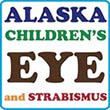
Much of what we learn comes through the five senses; Vision is a primary method of learning about things very close (microscope) or even very distant (stars and galaxies). Clear, steady eyes that are able to focus close, and align efficiently allow detailed messages about images, symbols, letters and words to be detected by the retina, transmitted via the optic nerves and tracts to the occipital cortex of the brain. From the occipital cortex, messages are interpreted and then compared with other areas of the brain for comparison, interpretation and memory.
Some children with poor vision, defocus, misalignment, nystagmus and retinal or nerve disease still may be able to learn well, and even read if the processing and comparison of their imperfect images is efficient enough. Dyslexia is a language disorder of inefficient processing letters, words and phrases- it is usually not a “tracking” problem.
The human eye is a living camera that can gather real-time, detailed information about tiny objects up close- to galaxies far away. With satisfactory, normal childhood visual development (not disrupted by amblyopia) both eyes can view an object between 10 cm and 6 meters processing the simultaneous images into depth perception and stereopsis (3D vision). An eye that can focus on a distant object without accommodative effort is called EMMETROPIC. Eyes that are out-of-focus are said to have one or more REFRACTIVE ERRORS. Distant images become blurred due to MYOPIA- also called nearsightedness; this occurs if the eye is too long, or the focusing power of the cornea and lens are too strong. HYPEROPIA, also called farsightedness- is caused by the eye being too short, or the power of the cornea – lens being not strong enough. If the cornea, or the lens of the eye is not uniformly round curved (like a soccer ball), then the cornea becomes football-shaped and the refractive error is called ASTIGMATISM. As people age, and get near 40 years old, the accommodative power of the cilliary body is not sufficient to bend the gradually inflexible crystalline lens- and near object become progressively blurry- a refractive error called PRESBYOPIA. The refractive error changes with age.
AMBLYOPIA on the ABCD Web Page
Good adult vision is learned during the first decade of a child’s life. Children’s vision can be impaired by poor focus (refractive), misalignment (strabismus) or blocked images (deprivation).
AMBLYOPIA is poorer than normal brain vision to one, or both eyes as a result of disrupted brain learning during the first decade of life.
Babies and children may develop high pressure in one or both eyes that can injure the optic nerve and cause blindness. Congenital glaucoma causes a very large eye with excess clear tearing, sensitivity to light and eventually a hazy cornea. Most forms of childhood glaucoma require surgical treatment but some can be managed with medications. Congenital glaucoma is rare but very serious.
The eye may have changes call “dysgenesis” from before birth and patients with clinical syndromes may have characteristic findings in their eyes of particular interest to geneticists and pediatricians.
Iritis is inflammation of the iris or ciliary body. It is a form of Uveitis- the name for inflammation of the vascular, inner layer of the eye. Iritis is detected by finding circulating white blood cells (WBC) in the aqueous humor between the pupil, the iris and the back of the cornea. Iritis usually causes pain, redness of the conjunctiva near the limbus, and sensitivity to light, but iritis can also be asymptomatic- especially in children with Juvenile Rheumatoid Arthritis (JIA). Iritis can cause scarring, glaucoma and cataracts. There are many causes of iritis including inflammatory conditions in the rest of the body. Iritis is treated by finding the cause, and then using anti-inflammatory medications, such as corticosteroid drops or pills, and cycloplegic drops.